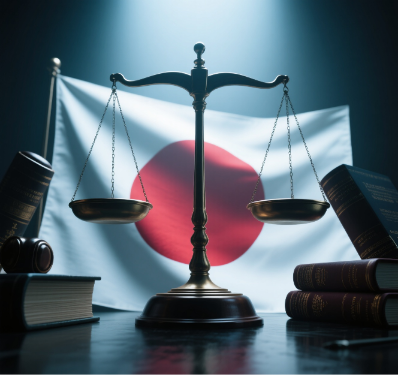In Japan, fertilizer regulations governed by the Fertilizer Control Act require production and import registration of fertilizer brands with the Ministry of Agriculture, Forestry and Fisheries (MAFF). The regulations also specify labeling requirements, including fertilizer registration number, type, composition, manufacturing date, and manufacturer/importer information. Additionally, restrictions exist against false advertising related to fertilizer composition and production methods.
1. Introduction: Legislative Framework and Objectives
Japan’s fertilizer market is governed by the Fertilizer Control Act (肥料取缔法, Hiryō Torishimari Hō), enacted to:
“Enhance agricultural productivity and protect public health by maintaining fertilizer quality, ensuring fair trade, and promoting safe soil application through standardized registration, inspection, and labeling systems” (Article 1).
The Ministry of Agriculture, Forestry and Fisheries (MAFF) administers regulations, with oversight by the Fertilizer and Feed Inspection Services (FFIS).
2. Fertilizer Classification & Registration Requirements
Fertilizers are categorized into two types with distinct compliance pathways:
| Classification | Definition | Regulatory Requirement |
|---|---|---|
| Ordinary Fertilizers | Chemically synthesized or processed fertilizers | Mandatory MAFF registration/provisional registration per brand |
| Special Fertilizers | Designated natural products (e.g., rice bran, compost) | Notification to prefectural governor ≥2 weeks before production/import |
| Specified Ordinary Fertilizers | Subset posing health risks if misused (Cabinet Order designation) | Additional registration requirements including usage scope and application methods |
3. Registration & Import Procedures
- Domestic Producers: Submit samples + Form No.1 to MAFF/prefecture for quality verification against official standards (Articles 4-9).
-
Foreign Producers: Must appoint a resident representative in Japan (Article 33-2). Registration applications require:
-
Technical documentation
-
Product samples analyzed by FFIS
-
Proof of compliance with MAFF standards
-
-
Importers:
-
Must be Japan-based entities (overseas firms cannot directly register)
-
Required documentation:
-
Certificate of Registration (or provisional registration)
-
MAFF import license
-
Ingredient disclosure records (Article 27)
-
-
4. Mandatory Labeling Specifications (Articles 17-18, 21-22)
All fertilizers must display:
-
MAFF Registration Number
-
Fertilizer type (e.g., “NPK Compound,” “Organic Mixed”)
-
Guaranteed Nutrient Content (minimum/maximum percentages)
-
Manufacturing date
-
Producer/Importer details
Special Requirements for Mixed Organic Fertilizers (2019 Amendment):
“*Nitrogen-containing raw materials must be listed either:
(a) In descending order by weight, or
(b) As the top five components comprising ≥80% of total weight, with remaining listed as ‘Others’ in non-specific order.*”
5. Key 2019 Amendments to the Fertilizer Control Act (Act No. 62)
Effective December 2020, amendments introduced:
| Amendment Focus | Key Changes |
|---|---|
| Raw Material Control | MAFF sets limits for beneficial/harmful elements in ingredients (Article 3) |
| Record-Keeping | Producers/importers must maintain detailed raw material records (Article 27) |
| False Advertising Ban | Prohibition on misleading claims about materials/production methods (Article 26) |
| Labeling Expansion | MAFF may mandate disclosure of specialized properties (e.g., slow-release) (Articles 21, 22-2) |
| Production Scope | Registration now required for: – Fertilizer+soil amendment mixtures – Non-chemical processing (e.g., granulation) (Articles 4, 16-2) |
6. Enforcement & Inspection Mechanisms
- On-Site Inspections: MAFF/FFIS/prefectural inspectors may audit facilities, examine records, and collect samples (Articles 30-33).
-
Quality Verification: Samples tested against guaranteed nutrient claims; results publicly disclosed.
-
Penalties: Non-compliance may result in registration revocation, fines, or import bans.
7. Regulatory Rationale & Policy Goals
Recent amendments address:
-
Soil Health Crisis: Declining rice paddy quality due to reduced compost use and elemental imbalances from synthetic fertilizers.
-
Circular Economy Promotion: Incentivizing food-waste compost utilization while ensuring safety.
-
Supply Chain Resilience: Reducing import dependency through domestic material sourcing.
Conclusion
Japan’s fertilizer regulations prioritize agricultural sustainability, consumer safety, and supply chain transparency. The 2019 amendments significantly strengthened oversight of raw materials and labeling accuracy. Foreign suppliers must partner with Japanese importers and rigorously document composition data to navigate the registration process successfully. Compliance demands continuous monitoring of MAFF updates, particularly for organic mixtures and specialized product categories.









